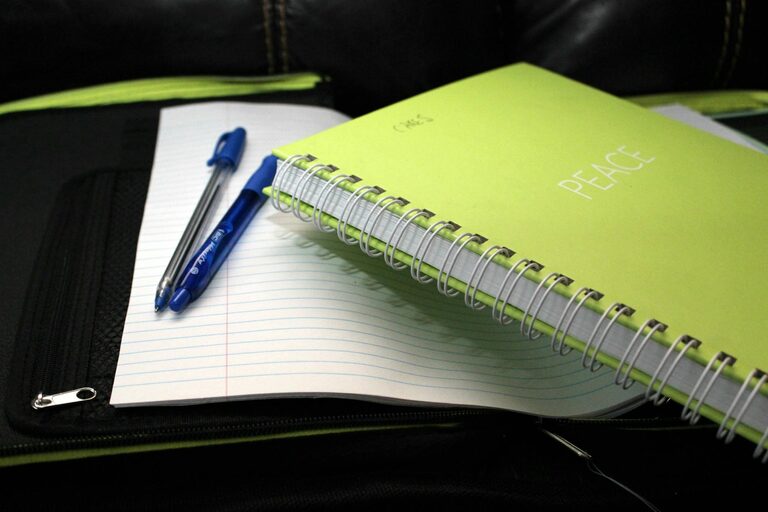
Choosing the right notebook might seem simple, but with so many options available, it can quickly become overwhelming. Whether you want to jot down ideas, plan your day, or sketch your next masterpiece, the notebook you pick can make all the difference in staying motivated to use it consistently.
In this guide, we’ll explore key factors to consider when choosing a notebook you’ll actually use and enjoy.
Why Choosing the Right Notebook Matters
A notebook isn’t just a pad of paper; it’s a tool that helps you capture thoughts, boost creativity, and organize your life. When you choose a notebook that fits your preferences, you’re more likely to use it regularly. On the other hand, the wrong notebook can end up collecting dust on a shelf.
Consider Your Purpose
Before shopping, think about how you plan to use the notebook. This will influence the type, size, and style you choose.
Types of Notebook Uses
– Journaling or diary writing: You might prefer a notebook with thick, smooth paper that feels nice to write on.
– Note-taking and work tasks: A spiral-bound or ringed notebook that lies flat can make writing easier.
– Sketching or doodling: Look for notebooks with unlined or dotted pages to offer flexibility.
– Planning and organization: Consider planners with built-in calendars or bullet journals with grids.
Knowing your primary purpose can help narrow down your choices.
Size and Portability
Notebooks come in various sizes, each suited for different uses.
– Pocket-sized (A6 or smaller): Highly portable, perfect for quick notes or on-the-go ideas.
– Medium (A5): A versatile size that’s easy to carry and offers enough space for writing.
– Large (A4 or letter size): Great for detailed notes or artwork but less portable.
Ask yourself where you’ll use the notebook most — at home, at work, or outside — and choose a size that fits comfortably in your bag or workspace.
Binding Type
Binding affects how your notebook feels and functions.
– Spiral binding: Allows the notebook to lie flat and pages to turn 360 degrees. Ideal for note-taking or sketching.
– Thread-bound/hardbound: More durable, often with an elegant cover; pages may not lay flat but tend to last longer.
– Stitched or glue-bound: Common in many journals but may not lie flat easily.
Think about whether you prefer a more flexible notebook or one that’s sturdier and more formal.
Paper Quality and Layout
Paper quality impacts your writing experience and what types of pens or pencils you can use.
– Paper thickness (measured in GSM): Thicker paper (80-120 GSM) reduces ink bleed-through, perfect for fountain pens or markers.
– Texture: Smooth paper suits pen ink, while textured paper may be better for pencils and charcoal.
– Page format:
– Lined: Best for writing text.
– Dotted: Good for bullet journaling and flexible layouts.
– Blank: Great for sketches and creative freedom.
– Grid: Useful for charts, graphs, or precision drawing.
If possible, test a sample page to see how different pens perform on the paper.
Cover Style and Material
Your notebook’s cover can reflect your style and influence durability.
– Hardcover: Offers protection and a stable writing surface; lasts longer.
– Softcover or flexible: Lightweight and bendable; easier to carry around.
– Leather or faux leather: Adds a touch of luxury and durability.
– Cardboard, fabric, or plastic: Affordable options with varied styles.
Choose a cover that appeals to you, as feeling good about your notebook encourages regular use.
Additional Features to Look For
Sometimes extra features can enhance your notebook experience.
– Pages with numbered lines or an index: Helpful for organization and reference.
– Built-in bookmarks or elastic closures: Keep your place and protect your pages.
– Pockets or expandable sleeves: Nice for storing notes, receipts, or stickers.
– Perforated pages: Useful if you want to easily tear out notes.
Decide which extras will actually benefit your workflow.
Budget Considerations
Notebooks range from budget-friendly options to luxury editions. Think about how much you want to spend upfront versus how long you plan to use the notebook. Sometimes investing in a slightly pricier notebook with better quality paper will save frustration and encourage use.
Try Before You Buy
If possible, visit a stationery store to flip through different notebooks. Pay attention to:
– How the paper feels under your favorite pen or pencil.
– How the notebook sits open on your desk or lap.
– Weight and thickness, both empty and full.
Trying notebooks firsthand can clarify what’s comfortable for you.
Final Tips
– Start small. It’s okay to experiment with different notebooks before settling on your favorite.
– Personalize your notebook with stickers, tabs, or covers to make it uniquely yours.
– Set a routine for using your notebook, such as journaling a few minutes each morning, to build a habit.
– Don’t worry about perfection; the goal is to have a notebook that inspires you to write or create regularly.
Conclusion
Choosing the right notebook is a personal process that depends on your style, goals, and preferences. By considering purpose, size, binding, paper, and features carefully, you’ll find a notebook that’s not just pretty but also practical — one that you’ll genuinely enjoy using every day.
Happy notebook hunting, and may your new companion be the start of many great ideas!
